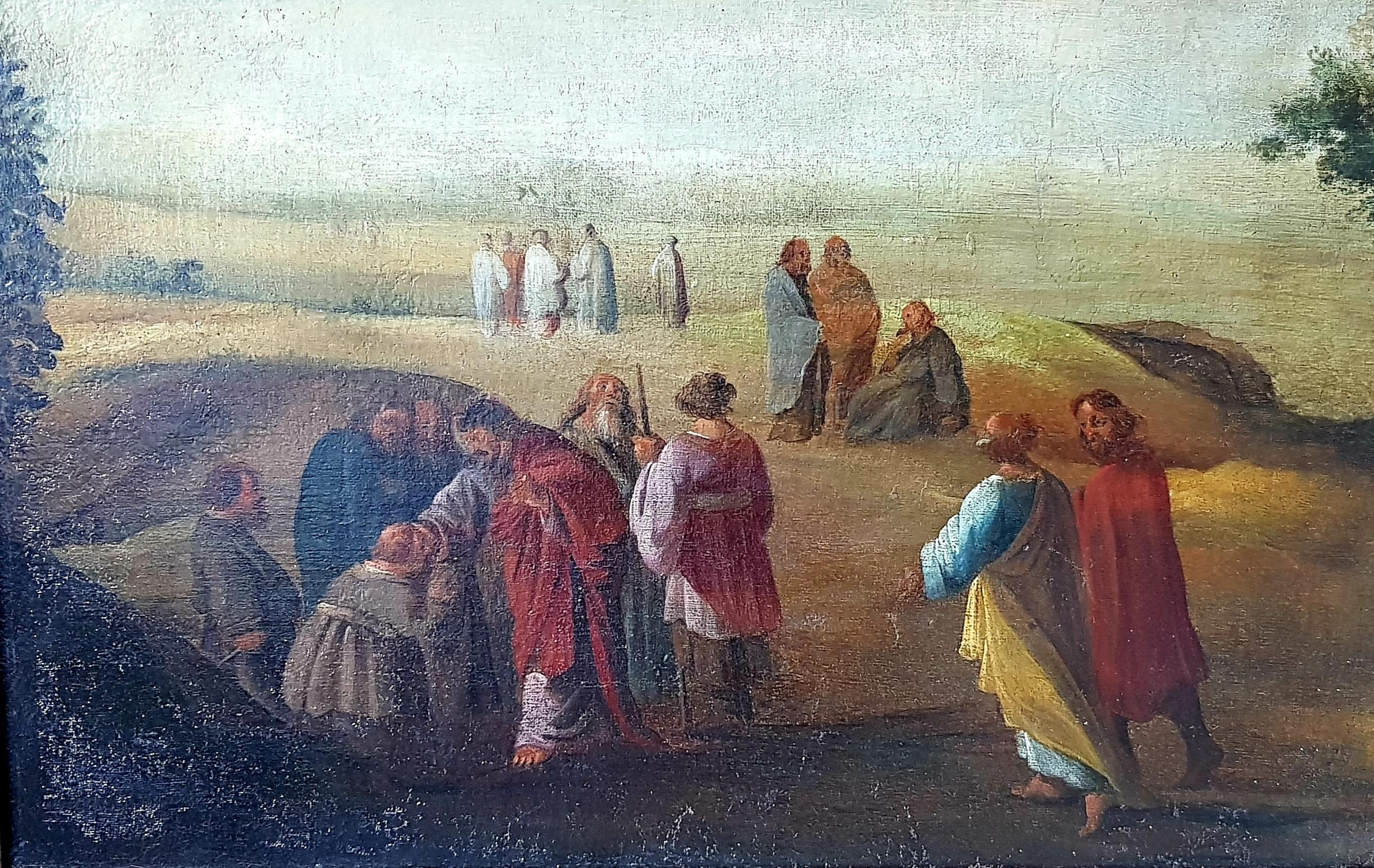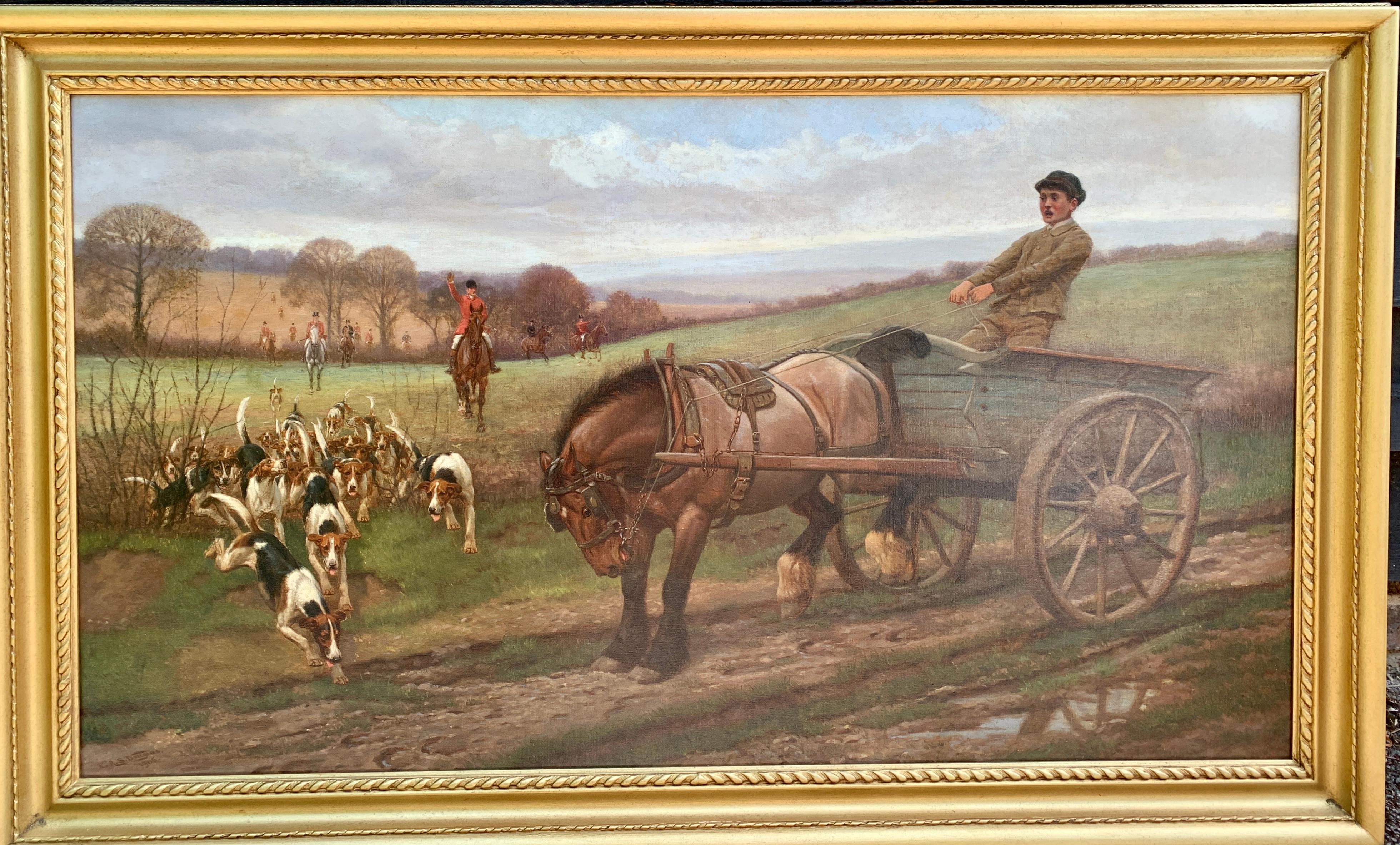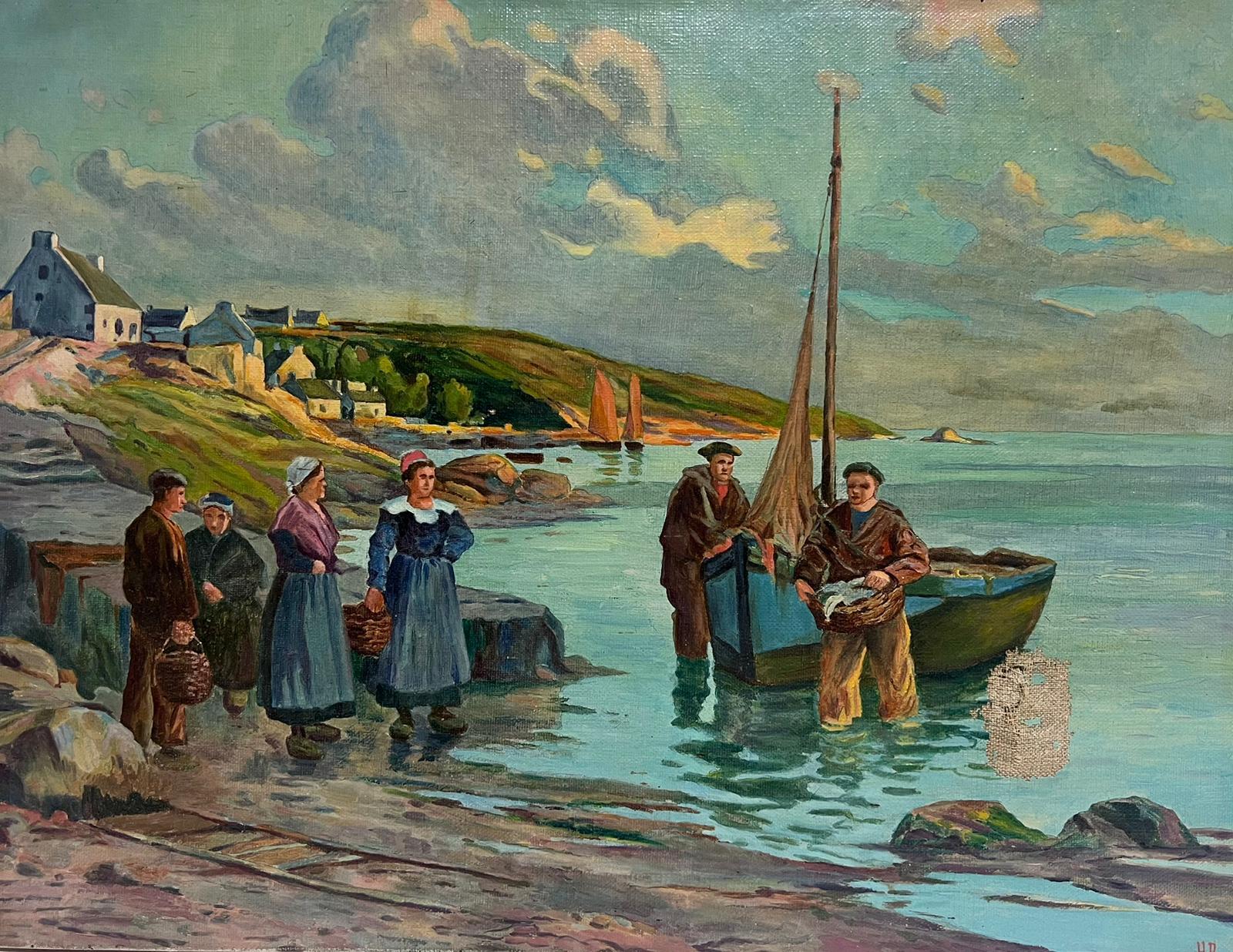Items Similar to Ophelia, Victorian 19th Century Royal Academy Oil Painting
Want more images or videos?
Request additional images or videos from the seller
1 of 10
William Stott of OldhamOphelia, Victorian 19th Century Royal Academy Oil Painting
About the Item
Oil on canvas, signed lower right
Image size: 33 1/2 x 56 1/2 inches (85 x 143 cm)
Original gilt frame
Provenance
With the artist's son, Millie Dow Stott Esq., until 1912.
Artist's Studio Sale, Christies, November 1913.
Private Collection
Exhibitions
London, Royal Academy, 1895, no. 679.
Paris, Societe de la Nationale des Beaux-Arts, 1896, no. 1179.
Berlin, VII Internationale Kunstausstellung 1897. no. 3533.
Manchester, City of Manchester Art Gallery, 1912, no. 339.
In the 1890s William Stott exhibited regularly at the Royal Academy, mainly highly decorative works with subjects derived from classical mythology and literature. This painting was Stott's 1895 entry to the Royal Academy and was subsequently exhibited at the Paris Salon of 1896 and then on to the Berlin, VII Internationale Kunstausstellung 1897. Shakespeare was a favourite source for Victorian painters, and the tragic romance of Ophelia, from Hamlet, was an especially popular subject, featuring regularly in the Royal Academy exhibitions.
The most popular and iconic image of Ophelia's death was, and is to this day, John Everett Millais's 1851 painting showing the confused and tragic Ophelia floating downstream on her back in a state of mad ecstasy, arms raised in a gesture of inevitable submission. However, although Stott chose not to pastiche this image, it seems highly likely that he was prompted to take up this subject, which had almost become a 'rite of passage' among Victorian painters, by the fact that in 1894 Millais's Ophelia was presented to the National Gallery of British Art by Sir Henry Tate.
It appears that Stott was much influenced by John William Waterhouse's version of the event, painted in 1889. Here, Ophelia is lying in a field of wildflowers her right arm outstretched along the ground, her left arm raised above her head. The top of her torso is twisted towards the viewer, whom she looks at with a confused stare. The similarities in the pose between Stott's portrayal and Waterhouse's 1889 version are striking, but in Stott's picture Ophelia is lying on her side on the bank of the stream and her fingertips are immersed in the water.
Where Stott references back to Millais' iconic 1851 representation of the tragedy is in his meticulous and painstaking execution of the surrounding foliage and flora. In this depiction of Ophelia one can see the painstaking care that has been given to every leaf, every frond and every flower, illustrating Stott's obsession with subordinating the human presence to a mere detail within the harmony of nature.
- Creator:William Stott of Oldham (1857 - 1900)
- Dimensions:Height: 33.5 in (85.09 cm)Width: 56.5 in (143.51 cm)
- More Editions & Sizes:1 of 1Price: $126,428
- Medium:
- Movement & Style:
- Period:
- Condition:
- Gallery Location:London, GB
- Reference Number:1stDibs: LU52412063812
About the Seller
5.0
Vetted Seller
These experienced sellers undergo a comprehensive evaluation by our team of in-house experts.
Established in 2007
1stDibs seller since 2014
64 sales on 1stDibs
Typical response time: 2 hours
- ShippingRetrieving quote...Ships From: London, United Kingdom
- Return PolicyA return for this item may be initiated within 3 days of delivery.
More From This SellerView All
- Study for Eastward Ho!, Oil on Panel 19th Century PaintingLocated in London, GBOil on panel Image size: 20 x 16 inches (51 x 40.5 cm) Handmade gilt frame Provenance Family estate This preliminary oil sketch for one of O'Neil's most famous works, "Eastward Ho!...Category
19th Century Victorian Figurative Paintings
MaterialsPanel, Oil
- David with the Head of Goliath, 19th Century Victorian OilBy John Rogers HerbertLocated in London, GBJohn Rogers Herbert RA 1810- 1890 Oil on canvas, dated '1850' lower right on sword strap Image size: 33 ½ x 23 ½ inches Gilt Watts frame This striking painting, depicts David as a y...Category
1850s Victorian Figurative Paintings
MaterialsOil
- The Choir Boys, 17th Century Italian SchoolLocated in London, GBOil on canvas Image size: 22 x 33 1/2 inches (56 x 85 cm) This is a half portrait of two choir boys wearing white ruffs at their necks, looking down as the...Category
17th Century Figurative Paintings
MaterialsOil, Canvas
- The Holy Family, 16th Century Venetian School, Oil on Canvas, Hand Carved FrameLocated in London, GBOil on canvas Image size: 26 x 37 inches (66 x 94 cm) Period hand carved gilt frame The pictorial arrangement of the Holy Family, with various saints in a landscape, was very popular in sixteenth-century Venice, following the prototype of Giovanni Bellini. Possibly intended for private devotion, this picture is a representative example of the compositional type known as the sacra conversazione...Category
16th Century Figurative Paintings
MaterialsCanvas, Oil
- The Rug Merchant, 19th Century Orientalist Oil Signed Oil Painting, 1879By Carl Friedrich Heinrich WernerLocated in London, GBOil on canvas, signed and dated '1879' bottom right Image size: 38 x 59 1/2 inches (96.5 x 151 cm) Ornate Orientalist style gilt frame Carl Werner Carl Friedrich Heinrich Werner wa...Category
1870s Figurative Paintings
MaterialsCanvas, Oil
- Summer in the City, Large Semi-Abstract 20th Century Oil Painting, Female ArtistBy Lena GurrLocated in London, GBOil on canvas, signed lower left Image size: 50 x 34 inches (127 x 86.25 cm) Hand made contemporary style frame This colourful painting depicts a group of swimmers as they throw themselves from a pier, into a cooling nearby body of water. Gurr has forever captured this movement, freezing these bodies in the air, mid-jump, with a constant promise that they will soon splash through the surface of the water below. Although bold and clearly quite abstract in nature, the details of this artwork are charming - a small child sits on the pier, already wrapped in a towel after his own watery dip. Note too how the nearest diver holds their nose with one hand, in an attempt to stop the water going in as they submerge. Lena Gurr had a prolific career in which she painted landscape scenes and still lifes but her most noted works are ones such as these, showing everyday city scenes that were laced with social commentary. Indeed, Gurr's noted that her artwork always aimed to show "the joys and sorrows of everyday life." During the course of her career Gurr's compositions retained emotional content as they evolved from a naturalistic to a semi-abstract cubist style. Discussing this trend, she once told an interviewer that as her work tended toward increasing abstraction she believed it nonetheless "must have some kind of human depth to it." Lena Gurr Lena Gurr, born in Brooklyn in 1897, studied at the Brooklyn Training School for Teachers, the Educational Alliance Art School, the Arts Students League with John Sloan, and with Maurice Sterne in Paris as well as in Mentone and Nice, France. Gurr was a member of the Artists League of America, the National Association of Women Artists, the New York Society of Women Artists, the Brooklyn Society of Artists, Audubon Artists and the American Artists Congress. She exhibited in numerous exhibitions held by these organizations as well as the Whitney Studio Club, National Academy of Design, Virginia Museum of Fine Arts, Brooklyn Museum, and the 1939 World's Fair. Her work is included in the collections of the Biro-Bidjan Museum, Russia and the Library of Congress, where she has been selected as a "Curator's Choice" in the Smithsonian Archives of American Art. In addition to her career as a painter, lithographer and serigrapher, she also taught art in the New York City public school system. She had three solo exhibitions at the ACA Gallery in 1935, 1939 and 1945, and a retrospective in 1963. Notable among Gurr's colleagues - many of them WPA artists - were Mary Cecil Allen...Category
Mid-20th Century Abstract Figurative Paintings
MaterialsCanvas, Oil
You May Also Like
- Ezekiel in the Valley of Dry BonesBy Philip Burne-JonesLocated in New York, NYProvenance: Christie’s, London, 3 March 1922, lot 46 (with The Tower of Babel); James Nicoll Private Collection Sotheby’s, London, 29 March 1983, lot 157 Private Collection, New Yo...Category
Late 19th Century Victorian Figurative Paintings
MaterialsOil, Canvas
- The rites of summerLocated in London, GBsigned ‘- George Wetherbee -‘ (lower left) oil on canvas 23 x 46 ½ in. (58.4 x 118.1 cm.) with frame 33 x 55 in. (83.8 x 139.7 cm.) An American, born in Cincinnati, George Faulkner Wetherbee...Category
Late 19th Century Victorian Figurative Paintings
MaterialsCanvas, Oil
- Holy Baptism, Bible Scene, Early 18th Century, Florentine SchoolLocated in Sofia, BGHoly Baptism, Oil painting on canvas by an unknown artist About the artwork: Bible Scene, Early 18th Century, Florentine School TECHNIQUE: oil pai...Category
Early 18th Century Victorian Landscape Paintings
MaterialsOil, Canvas
- Early 20th century English Fox Hounds, Huntsmen &, horse and cart in landscapeBy Edward Algernon Stuart DouglasLocated in Woodbury, CTEarly 20th-century English oil painting with the subject taken from one of Robert Bloomfield's poems, The Farmers Boy. "E'en Sober Dobbin lifts his clumsy heel, and kicks, disdainful of the dirty wheel Edward Algernon Stuart Douglas...Category
Early 1900s Victorian Figurative Paintings
MaterialsOil, Canvas
- Antique Breton Fishing Scene French Oil Painting on Canvas Fishermen & WomenLocated in Cirencester, GloucestershireBreton Fisherfolk on the Shore French School, early 1900's signed with initials HB oil on canvas, unframed canvas: 15.5 x 20 inches provenance: private collection, France condition: ...Category
Early 20th Century Victorian Figurative Paintings
MaterialsOil, Canvas
- Antique Scottish Highland Loch landscape, with sunlit streaming onto the waterBy Francis E. JamiesonLocated in Woodbury, CTFrancis Jamieson was a painter in oil and watercolor of highland landscapes and coastal scenes. (The work of this highly prolific artist is curious since the oils and watercolors have two quite distinctive styles and subject matter. The oil paintings are most frequently seen and these are highland landscapes or loch scenes - sometimes they appear to be signed with pseudonyms such as 'W. Richards' and 'Phil Hips' - the location is usually inscribed on the reverse. The watercolors are often coastal scenes with boats and figures on a shore, painted in a more traditional Victorian style, and possibly pre-date the oils. F. E. Jamiesons's beach scenes were published as postcards around 1920 by G. Ajelli & Co. of London on a textured card to give the appearance of oils. Jamieson is known to have traveled widely in the South of England between the wars selling his work but does not appear to have exhibited.) This quote in parentheses is taken from Jeremy Wood's excellent book 'Hidden Talents - A Dictionary of Neglected Artists Working 1880-1950'. - Work by Francis Jamieson can be seen at the usual sites. Please note that on all these sites you will find F. E. Jamieson variously listed as Francis E. Jamieson, F.E.Jamieson, Frank E. Jamieson, Frederick E. Jamieson etc. You may also find some listings under his various pseudonyms of Arnould Pienne, Charles Maurice, Graham Williams...Category
1910s Victorian Landscape Paintings
MaterialsCanvas, Oil
Recently Viewed
View AllMore Ways To Browse
Victorian 19th
Royal Academy Of Arts
Original Oil Paintings Of Paris
Antique Victorian Painting
Antique Victorian Paintings
Antique Oil Painting Gallery
19th Century Original Oil Paintings
19th Century Paris Paintings
Antique Oiling Can
Antique Oiler Cans
Antique Oiler Can
Antique Oil Can
Antique Oil Cans
Oil Cans Antique
Oil Can Antique
Antique Cans Of Oil
Victorian Framed Painting
Victorian 19th Century Paintings





